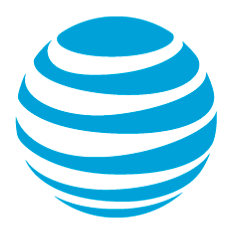When it comes to 5G, the leading U.S. wireless carriers are ready to do whatever it takes to stay competitive. This is crystal clear now that the FCC has released the results of the C-band auction, disclosing that Verizon (aka Cellco for auction bidding purposes) will spend $45.5 billion, AT&T will spend $23.4 billion, and T-Mobile, which already has significant mid-band holdings, will commit $9.3 billion. The C-band spectrum (3.7-3.98 GHz) is considered ideal for many 5G use cases, and by securing licenses in each of the 406 available partial economic areas, Verizon and AT&T move toward closing the spectrum gap that threatened to put them at a disadvantage.
The only problem is the price tag. This is especially true for AT&T, which has far less cash on its balance sheet than Verizon, ($9.7 billion vs. $22 billion). AT&T recently secured a $14.7 billion line of credit, which will help. In addition, AT&T is expected to raise some cash through the sale of DirecTV, U-Verse, and AT&T TV. Several reports have placed the value of those businesses at $15 billion, but the most recent word is that AT&T will only sell a minority stake to private equity firm TPG. That means AT&T isn’t likely to raise $15 billion from the sale. If the reported valuation is accurate and AT&T is selling a minority stake, the carrier gets less than $7.5 billion.
If AT&T commits $9 billion in existing cash to the auction, plus $7 billion from selling a stake in the TV businesses, it could presumably draw on its line of credit to pull together a total of at least $30 billion if needed. But then what? The spectrum won’t generate cash flow until AT&T deploys it, and doing so requires more cash. Lots more.
No direct benefit
AT&T’s contractors and suppliers have every reason to focus on the company’s cash, and many were probably hoping a sale of DirecTV would bring in at least $15 billion. DirecTV has been a disappointment, and getting out now seems like an obvious choice, as subscribers continue to abandon the service in favor of streaming options. AT&T has acknowledged this by separating the laggard video business, which includes DirecTV, from its more profitable Warner Media unit.
Selling DirecTV would deliver a direct benefit, but keeping a majority stake gives AT&T an indirect benefit. The company can probably delay further write-downs of DirecTV, which was worth more than three times its current reported value when AT&T bought it. During the fourth quarter of 2020, AT&T wrote off $15 billion of DirecTV’s value, and an outright sale would probably mean another, potentially bigger write-off.
AT&T has forecast capital expenditures in the $21 billion range for 2021. Last year it forecast $20 billion and came in below that. This year, the carrier expects free cash flow in the $26 billion neighborhood, excluding proceeds from asset sales. The company isn’t saying exactly which assets those could be, but it seems likely that something else will be on the block. AT&T is committed to maintaining its hefty dividend (more than $14 billion last year), and projected free cash flow seems unlikely to cover capex plus dividends.
AT&T can quietly trim capex if it needs to, but there would be nothing quiet about a cut in its sacrosanct dividend. It seems likely that the carrier will again come in slightly below its capex projections this year, despite its cache of valuable new spectrum.

Veteran telecom industry editor and journalist Martha DeGrasse is an Inside Towers Contributing Analyst with features appearing twice per month. DeGrasse owns Network Builder Reports and contributes regularly to several publications. She was formerly a writer and editor with RCR Wireless and a TV business news producer.





Reader Interactions